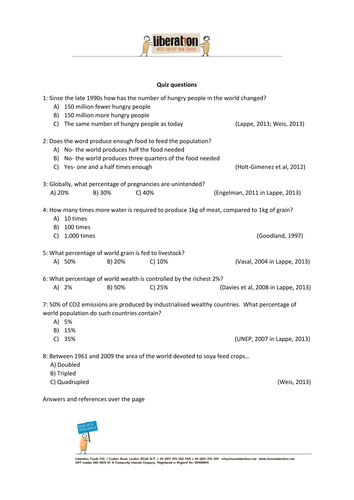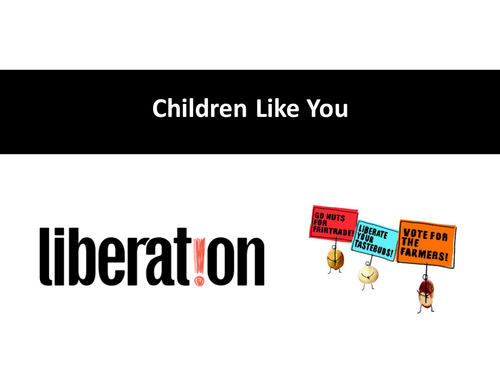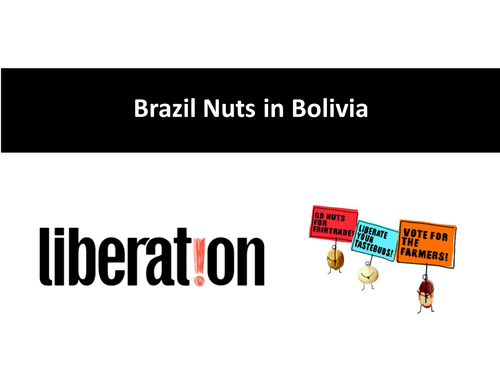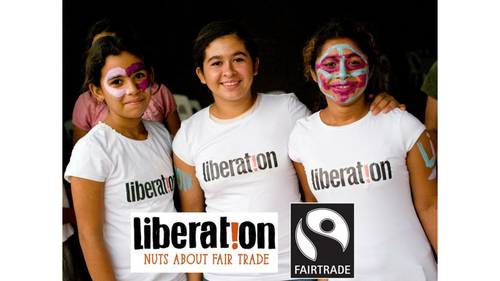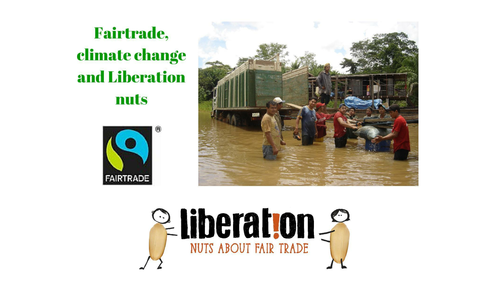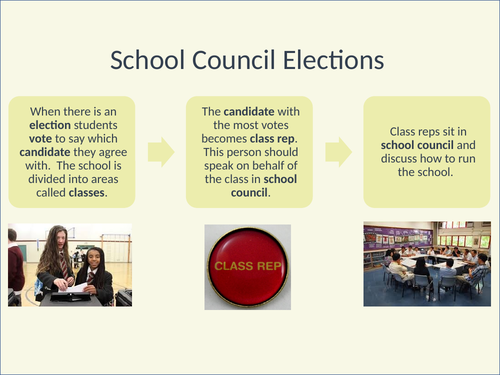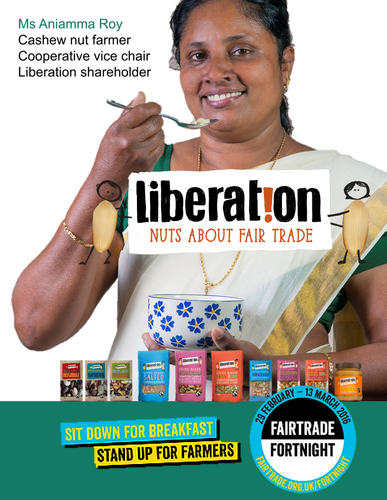12Uploads
3k+Views
2k+Downloads
All resources

Fairtrade food security quiz sheet
Why is there so much hunger while there is so much food?! This quiz which fits with the 2016 Fairtrade Fortnight theme of food security, but can be used at any time.
National Curriculum links:
Key Stage 3
Geography: Place knowledge- UK relationship with the wider world. Human geography processes and change- population and economy.
Key Stage 4
Geography: Human geography processes and change- global economic development issues, the causes and consequences of uneven development at a global level.
A Level
Economics: The international economy- globalisation, trade, market failure- inequity, environment, income distribution.
Geography: International trade, including access to markets, inequality and 'fair trade'; the nature of economic, political, social and environmental interdependence in the contemporary world; inequities of global systems and how they can result in unemployment, poverty and declining welfare standards for some people and localities, and advantages for other people and localities; food production, circulation and consumption.

Fairtrade nut producer's 'children like you' pictures
Use this resource to discuss the similarities and differences between the lives of your children and these Fairtrade nut producer's children. Use this as a presentation, pictures to pass around, or print out as a book.
Key Stage 1
Geography: Similarities and differences between a small area of the UK and a non EU country

How Fairtrade nuts are made activity
Print out and cut out these pictures. Arrange them into chronological order, starting with the nuts being produced, and ending with them in the UK. Use this to prompt discussion among the class over, for example, how many people are involved in the process.
Key Stage 1
Geography: City, town, village, factory, farm, house, office, port, harbour, shop

Vegan learning resources- list of places to find vegan teaching materials in Veganuary
https://www.livingwithwarmth.com/vegan-learning-resources
https://www.livingwithwarmth.com/post/accidentally-vegan-picture-books
Vegan/ animal welfare activities for toddlers, children and teenagers in early years, primary or secondary school, or home education.
Including:
Printable vegan colouring sheets
Puzzles- soduku, crossword, maze, cut-out characters, wordsearch
Card games- top trumps, activity info cards
Activity instructions
Lesson plans, worksheets, factsheets, leaflets, videos

Environmental Impacts of Animal Consumption/ Meat/ Livestock- vegan/ Veganuary
Label the pictures A to P to show which environmental impact of livestock they represent. Environmental impacts listed on a picture of scenery.
Further information given here: https://www.livingwithwarmth.com/reasons-to-be-vegan.
For use online: https://docs.google.com/document/d/1N2VMDQihSRyQY3N1mUBafpxAZ2682TzKaROLMvJ0Zzo/copy
Vegan/ plant based/ humane learning material.

Vegan friendly children's books (with video and teaching materials) for Veganuary
https://www.livingwithwarmth.com/post/accidentally-vegan-picture-books
https://www.livingwithwarmth.com/vegan-kids-books
Vegan children’s books organised by age and subject.
Books by vegan authors which encourage compassionate kids, and present farming accurately. Includes: Baby board books, children’s picture books, poetry and rhymes, teen fiction, cookery books, books for parents and teachers.

British Values and Citizenship Learning Resources for adult community learning and further education
OCN course workbook download. Life in the UK test history revision map, and further useful videos and links on the blog.
I made this for adult community learning and family learning. However, it could also be used by secondary schools, or for home study.

Fairtrade nut company introduction presentation.
An introduction to a Fairtrade company in the form of answers to questions posed by secondary school students.
Key Stage 4
Business Studies: Understanding international trade, human resources negotiation and consultation, how the business was set up, business aims, organisational structure.
A Level
Economics: Follow up with: The international economy- globalisation, trade, business objectives, asymmetric information, market failure- inequity, environment, income distribution.
Geography: International trade, including access to markets, inequality and 'fair trade'; the nature of economic, political, social and environmental interdependence in the contemporary world; inequities of global systems and how they can result in unemployment, poverty and declining welfare standards for some people and localities, and advantages for other people and localities;
food production, circulation and consumption.

Fairtrade, nuts and climate change presentation
How Fairtrade nut producers deal with, and are affected by climate change. A short presentation for older audiences who are interested in the links between social and environmental justice.
Related reading:
http://sustainablehackney.org.uk/profiles/blogs/liberation-for-climate-change-mitigation
Key Stage 3
Geography: Follow up with: physical geography processes and change- evidence and causes of climate change
Chemistry: Follow up with: the production of carbon dioxide by human activity and the impact on climate.
Key Stage 4
Geography: Examples of extreme weather for changing weather and climate- follow up with scientific explanation.
Biology: Anthropogenic cause of climate change.
A Level
Environmental Studies: Control of global Climate Change, food production systems.
Geography: International trade, including access to markets, inequality and 'fair trade'; the nature of economic, political, social and environmental interdependence in the contemporary world; inequities of global systems and how they can result in unemployment, poverty and declining welfare standards for some people and localities, and advantages for other people and localities;
food production, circulation and consumption.

Politics: 2017 general election health policies
I created this workshop about politics for adult learners studying entry level adult literacy. They each had learning difficulties and differences/ LDD/ SEN. However, I have also used it with primary school children. Once, I accompanied the lesson with resources about democracy from Twinkl. I used it to cover the British Values requirement to cover Democracy.
The presentation explains what elections are, and accompanies the worksheets ‘election literature’ and ‘words and definitions’. In the election literature worksheet learners are asked to identify the type and purpose of pieces of literature which came through my door at election time. They then match the political words to the definitions (cut these our first). In the final worksheet ‘health policies’, learners consult the ‘comparison table’ and ‘short manifesto’ to answer questions about the policies of each party.

Fairtrade Fortnight nut producer posters and leaflet
Five nut farmer and gatherer image posters to tie in with the Fairtrade Fortnight 2016 breakfast theme, and four general ones plus a leaflet. All contain company logo.

Fairtrade Brazil Nut Ecology presentation and worksheet
For use online: https://docs.google.com/document/d/1KOw0TnGdrFhZWTlPPqgogDPmWxjpjTJPvCCY8gMdx7U/copy
This resource is ideal for Fairtrade Fortnight, and can be used with all ages by varying the amount of depth you go into. It suits the curriculum for Geography, Biology and Environmental Studies.
This resource explains the story of how a Brazil nut is gathered in the Amazon rain forest and sold in the UK. It follows the gatherers as they encounter many scary/ cute animals. Brazil nuts depend on certain animals for their pollination and seed dispersal, and how this means they cannot be farmed. It then explains how these animals interact others in the forest.
The presentation ends with information about life in the Amazon as a Fairtrade farmer, and the benefits Fairtrade has brought local children. It also situates this trade within the context of agribusiness and deforestation.
Activities:
It is suggested in the presentation that a 16.5m length of string be used to demonstrate the width of a Brazil nut tree.
I have also used Fairtrade nut packaging to create rainforest animal hats.
Curriculum relevance:
Key Stage 1
Geography: Forests, hot areas of the world, the equator
Science: Follow up with identification of animals
Key Stage 2
Geography: South America, the equator, the tropics, distribution of food and water
Science: Follow up with: the life cycle of flowering plants, environmental change, food chains, the water cycle, photosynthesis, animal classification and adaptation
Key Stage 3
Geography: Global ecosystems- rainforests, resource management and biodiversity, evidence and causes of climate change.
Biology: Follow up with: reproduction in plants and photosynthesis, interdependence, how organisms affect and are affected by their environment.
Chemistry: Follow up with: Anthropogenic carbon dioxide emissions and climate change.
Key Stage 4
Geography: Case study, floods - follow up people and the environment, biodiversity and sustainable management, biotic and abiotic interactions.
Biology: Follow up with: photosynthesis, abiotic and biotic factors in a rainforest ecosystem, interdependence, biodiversity, positive and negative human interaction, and anthropogenic cause of climate change.
A Level
Geography: International trade, interdependence, inequities of global systems, food systems.
Biology: Follow up with- Ecosystems- the human part in the ecological balance, effective management of conflict between human needs and conservation; Biodiversity- adaptations.
Environmental Studies: Habitat destruction, species interdependence, forest production, deforestation.
Accompanying articles here: https://www.livingwithwarmth.com/vegan-mum-blog/categories/workshops

